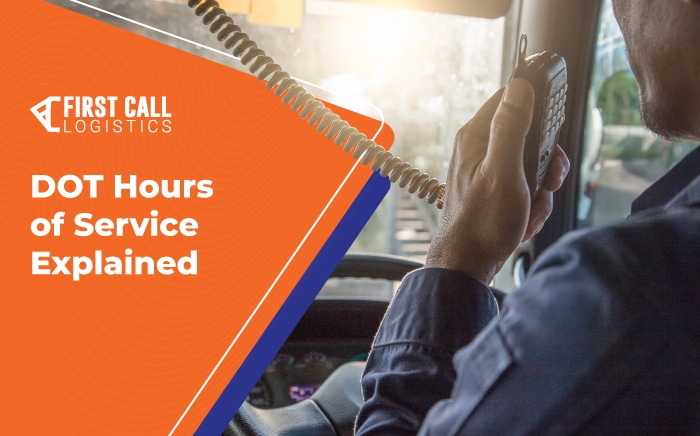DOT Hours of Service Explained

Trucking can seem like a solitary career at times, and it attracts self-motivated, independent individuals. However, truck drivers must understand and abide by rules set out by the Federal Motor Carrier Safety Administration (FMCSA) and the Department of Transportation (DOT). Some of the most important regulations are known as Hours of Service (HOS) rules.
Hours of Service rules lay out how many hours drivers may work each day and week. It includes mandatory breaks so that drivers can get rest and stay safe on the roads. Fatigue can be deadly for truck drivers. Since a study found that 1 in 25 truck drivers have admitted to falling asleep behind the wheel, Hours of Service rules are important for keeping everyone safe.
Some companies now use electronic logging device (ELD) solutions. An ELD is a device that connects a truck’s data in real-time so that compliance managers can monitor drivers. Despite these technological advances, it’s important for carriers and drivers to understand Hours of Service rules.
Hours of Service Rules You Need to Know
The FMCSA outlines who must comply with Hours of Service rules on their website. Essentially, you must comply with HOS regulations if you are a carrier or driver operating a commercial motor vehicle as part of interstate commerce. Even passenger transportation vehicles can be subject to Hours of Service rules.
These are the four most important rules that you need to know:
1. The 30-minute break exception
This exemption relates to the 30-minute break rule. It is commonly also known as the short-haul exemption because it usually applies to drivers making daily deliveries. For short-haul drivers operating within a 150 air-mile radius of their home base, they may be exempt from taking a 30-minute break as long as they don’t exceed their 14-hour shift limit.
2. The 16-hour short-haul exception
Another exemption in place for short-haul drivers, this exemption enables drivers to extend their shifts from 14 hours to 16 hours once each cycle.
3. Adverse driving conditions
This regulation recognizes that adverse driving conditions can make it more difficult for drivers to stick to limits for consecutive hours of driving. It allows drivers to add two hours to their driving window. Keep in mind that for this rule to apply, drivers must not have been able to anticipate the adverse driving conditions.
4. Emergency conditions
Occasionally, more extreme emergencies arise. If state or federal institutions declare a state of emergency, all Hours of Service regulations can potentially be lifted. The FMCSA keeps a list of emergency declarations available for carriers.
What Changes to Hours of Service Rules Are Being Proposed?
The FMCSA periodically updates Hours of Service rules. Given the supply chain issues caused by the COVID-19 pandemic, there have been unexpected changes with more on the horizon.
The FMCSA has proposed a Split Duty Period Pilot Project. The organization seeks to study the safety implications of allowing up to a three-hour break instead of just 30 minutes. The result could be the extension of allowable workdays from 14 to 17 hours. Corporations, safety advocates, and truck drivers have had mixed reactions to the potential changes.
Recently, the FMCSA implemented a different change for short-haul drivers. The organization lengthened on-duty hours and extended drivers’ distances of operation. Undoubtedly, more changes will continue to occur under the current presidential administration.
Hours of Service rules can seem complex, but they are critical to maintaining truck drivers’ safety and good work conditions. Understanding the basics of HOS rules and exemptions will keep you safe and in compliance.
Stay Informed with First Call Logistics
At First Call, we’re committed to supporting our carrier network with the resources necessary to be successful. To learn more about our technology, market expertise, and extensive carrier network, Contact Us today.
The 3PL You’ve Been Looking For
Building and managing cost-efficient supply chains is a full-time job. First Call’s rare combination of in-house assets, expert problem-solving and track record of stellar customer service makes us the 3PL of choice for carrier partners looking to make the most of their miles.
“First Call always paid on time and would get me back-hauls whenever possible which was great.”
– Wayne, Carrier
More Resources for FCL Carriers:
Get the latest supply chain news and updates directly to your inbox.